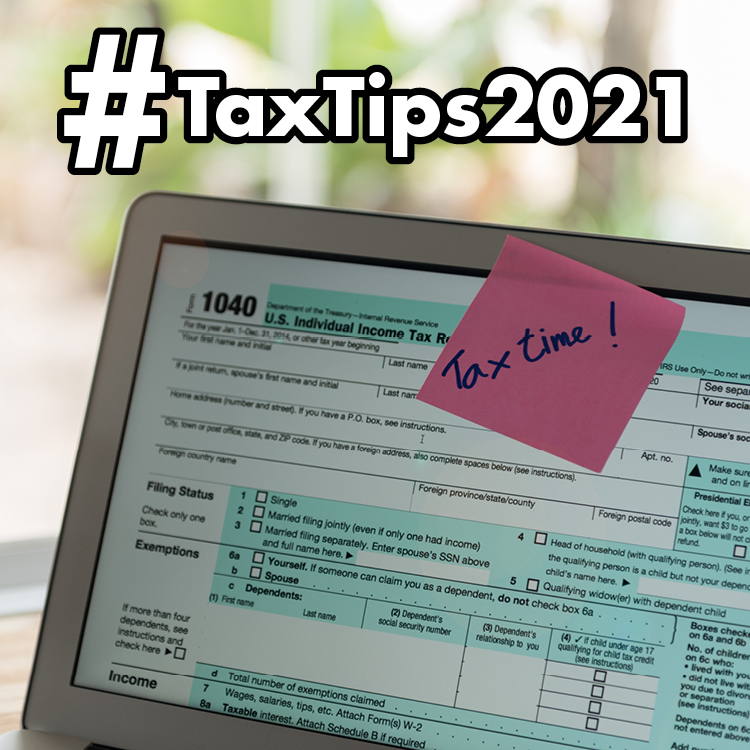Last-Minute Tax Tips to Know Before You File
The big day is drawing near, and if you haven’t already done so, it’s time to file your tax return! Before you file, though, it’s a good idea to review your return to ensure you haven’t made any mistakes or forgotten any deductions or credits you’re eligible to claim. Below, we’ve compiled a list of last-minute tax tips to know before you file. Consider filing electronically If you still file your taxes the old-fashioned way, you may want to consider switching to e-filing this year. The IRS e-file is available to all taxpayers, and many can file electronically at no cost. Re-check your Social Security numbers Make sure every Social Security number on your return, including your own, your partner’s and each of your dependent’s, is listed correctly. Check that the SSNs related to claims for Child and Dependent Care Credit or Earned Income Tax Credit are accurate as well. Don’t forget any deductions Be sure you’ve taken every tax deduction that’s available to you before completing your return. Here are some of the deductions that many people often forget to claim: In the past, if anyone other than the student paid toward a student loan, there were no tax benefits. Now, however, any student who is not claimed as a dependent can qualify to deduct up to $2,500 in student loan interest, regardless of who has made the payment. Make sure to claim the full Child and Dependent Care Tax Credit A tax credit reduces your tax bill dollar for dollar, so it’s important to claim every credit that is owed to you. There were big changes to the Child and Dependent Care Credit this year, and it’s best to take full advantage of those changes. The American Rescue Plan, signed into law on March 11, 2021, increases the credit and makes it fully refundable, so taxpayers can receive the credit even if they don’t owe taxes. The new law also expands the eligibility requirements for taxpayers who can benefit from the credit’s highest rate. The changes to the Child and Dependent Care Credit that apply only for tax year 2021 include: Double-check your figures If you are filing a paper return, double-check that you have correctly calculated the refund or balance due. Run the numbers through a calculator again, and then again, to ensure you haven’t made any mistakes in your figures. Get your return in on time Tax day is usually on April 15. This year, the deadline has been postponed to April 18. If you know you won’t be ready to file on time, you’ll need to request an extension. It’s important to note, though, that an extension to file does not include an extension for payment. Be sure to pay up on time or you may face penalties. Don’t forget to sign your form Your tax return must be signed and dated in order to be filed. If you’re filing jointly, be sure to have your partner sign as well. Also, if you’ve hired someone to prepare your return, have the preparer sign the form and enter their Preparer Tax Identification Number (PTIN). It’s tax time! Use the tips outlined here to maximize your refund and ensure there are no mistakes on your tax return. Your Turn: Share your last-minute tax tips with us in the comments.
Save The Date For Our 65th Annual Meeting!
SRI Federal Credit Union’s 65th Annual Meeting will be held virtually on Wednesday, March 16th at noon.
Click HERE to login to Zoom
on 03/16/2022 @ 12 noon
Meeting ID: 889 9979 4696
Passcode: Srifcu333!
In addition to showcasing the Credit Union’s 2021 financial performance, accomplishments, and featured products, we will be electing Board Members.
As always all attending members will have a chance to win a Raffle prize. Winners will be picked at random.
Be sure to save the date, Wednesday, March 16th, at noon. See you on-line!
Access to the credit union continues to be limited. Click here to make an appointment.
Is it a Good Idea to Open a HELOC Now?
If you’re looking for a large sum of money to use for a home improvement project, or the economic devastation of COVID-19 has left you in desperate need of cash, consider tapping into your home’s equity. One great way to do this is by opening a home equity line of credit, or a HELOC. Let’s take a closer look at HELOCs and why they can be an excellent option for cash-strapped homeowners in today’s financial climate. What is a HELOC? A HELOC is a revolving credit line allowing homeowners to borrow money against the equity of their home. The HELOC is like a second mortgage on a home; if the borrower owns the entire home, the HELOC is a primary mortgage. Given that a HELOC is a line of credit and not a fixed loan, borrowers can withdraw money from the HELOC as needed rather than borrowing one lump sum. This allows for more freedom than a loan and is especially beneficial for borrowers who don’t know exactly how much money they’ll ultimately need to fund their venture. Borrowers withdraw funds (aka “draws” or “advances”) from the HELOC during a set amount of time that is known as the “draw period,” which generally lasts 10 years. Some lenders place restrictions on HELOCs and require borrowers to withdraw a minimum amount of money each time they make a draw, regardless of need. Other restrictions include the requirements to keep a fixed amount of money outstanding, or to withdraw a specific sum when the HELOC is first established. [At SRI Federal Credit Union, we allow borrowers to ….] How do I repay my HELOC? Repayment of HELOCs varies, but is usually very flexible. Many lenders collect interest-only payments during the draw period, with principal payments being strictly optional. Others require ongoing monthly payment toward both principal and interest. When the draw period ends, some lenders will allow borrowers to renew the credit line and continue withdrawing money. Other lenders require borrowers to pay back the entire balance due, also known as a “balloon payment.” Still others allow borrowers to pay back the loan in monthly installments over another set amount of time, known as the “repayment period.” Repayment periods are generous, lasting as long as 20 years. How can borrowers spend the money? While home improvement projects are popular uses for HELOCs, borrowers are free to spend the money however they please. Some other uses for HELOCs include debt consolidation, funding a wedding, adoption, dream vacation or the launch of a new business. Is everyone eligible for a HELOC? Like every loan and line of credit, HELOCs have eligibility requirements, which help lenders determine the applicant’s financial wellness and responsibility. Most notably, the borrower must have a minimal amount of equity in the home. Lender requirements vary, but most homeowners will be eligible for a HELOC with a debt-to-income ratio that is 40% or less, a credit score of 620 or higher, and a home assessment that stands at a minimum of 15% more than what is owed. How much can I borrow with a HELOC? HELOC amounts vary along with three criteria: the value of your home, the percentage of that value the lender allows you to borrow against and the outstanding amount on an existing mortgage. To illustrate, if you have a $300,000 home with a mortgage balance of $175,000 and your lender allows you to borrow against 85% of your home’s value, multiply your home’s value by 85%, or 0.85. This will give you $255,000. Subtract the amount you still owe on your mortgage ($175,000), and you’ll have the maximum amount you can borrow using a HELOC, which is $80,000. What are the disadvantages of a HELOC? Also, many lenders require the full payment of the HELOC after the draw period is over. This can prove to be challenging for many borrowers. Finally, if you don’t plan to stay in your home for long, a HELOC may not be the right choice for you. When you sell your home, you’ll need to pay off the full balance of the HELOC. You may also need to pay a cancellation fee to the lender. A HELOC can be a great option now HELOCs have variable interest rates, which means the interest on the loan can fluctuate over the life of the loan, sometimes dramatically. This variable is based on a publicly available index, such as the U.S. Treasury Bill rate, and will rise or fall along with this index, though lenders will also add a margin of a few percentage points of their own. The fallout of COVID-19 may impact the economy for months, or years, to come; however, there is a silver lining among the rising unemployment rates and bankrupt businesses: historically low-interest rates. The average APR for fixed 30-year mortgages has hovered at the low 3% for months now, and experts predict it will continue falling. The low rates make it an excellent time to take out a HELOC with manageable payback terms. The economic uncertainty the pandemic has generated also makes it prime time to have extra cash available for any need that may arise. Are you looking to tap into your home’s equity with a HELOC? Call, click, or stop by SRI Federal Credit Union today to get started. Our favorable rates, generous eligibility requirements, and easy terms make an SRI Federal Credit Union HELOC a great choice. For more detailed information on our HELOC products please click HERE.
A HELOC is secured by your home’s equity, which places your home at risk of foreclosure if the HELOC is not repaid. Before opening a HELOC, it’s a good idea to run the numbers to get an idea of what your monthly payments will look like and whether you can easily afford to meet them.
Step 2 of 12 to Financial Wellness: Creating a Budget
Now that you’ve tracked your spending and kept a careful record of where your money goes over the course of a month, you’re ready to move on to the next step of financial wellness: creating a budget. Budgets play a crucial role in promoting financial awareness, which then helps to facilitate more responsible money choices. This discipline will benefit you individually, as well as all who are part of your household. Let’s get started by taking a look at how to create a budget and review some popular budgeting systems and how they work. Create a budget in 5 easy steps Budgeting systems While every kind of budget involves tracking expenses and committing to a maximum spending amount each month, there is a wide range of budgeting systems to fit every kind of personality and money management style. The traditional budget doesn’t involve much more work than the steps described above. After working out a number for every expense category, you’ll simply need to track your spending throughout the month to ensure you’re sticking to the plan. You can use a spreadsheet for this purpose, or utilize one of the popular budgeting apps, like Mint or YNAB, and do it digitally. The money-envelope system works similarly. However, instead of simply committing to sticking to your spending amounts for each expense category, you’ll withdraw the amount you plan to spend on all non-fixed expenses in cash at the start of the month. Divide the cash into separate envelopes, using one for each of these expenses. Then, withdraw cash from the appropriate envelope when making a purchase in that category. There’s no way to blow your budget with this system; when the money in the “Dining out” envelope runs dry, that’s all for this month! The 50/30/20 budget is simpler but requires more discipline. Set aside 50 percent of your budget for your needs, 30 percent for wants, and the remaining 20 percent for savings. Of course, you’ll need to make sure your income and expenses will work with this kind of budget. Does 50 percent of your income cover your needs? If yes, this budget allows for more individual choices each month and less accounting and tracking of expenses. A well-designed budget can provide its creator with a sense of financial security and freedom. When you stick to a budget, you’ll always know you have enough to get through the month and save for the future. Start budgeting today!
How to Celebrate Valentine’s Day on a Budget
Love is in the air and the money is flowing like heart emojis. According to the National Retail Federation, the average American spends $221.34 on Valentine’s Day each year. That’s a lot of money to spend on a one-day celebration!
Lucky for you, there are ways to enjoy a romantic evening with your partner without going into debt. Here’s how: Work with a budget Instead of spending mindlessly and regretting it afterward, designate a budget for all your Valentine’s Day expenses, and be sure to stick to it. In addition to helping you keep costs under control, working out a budget in advance will allow you to choose how to spend your money. You may decide to spend more on a gift and less on dinner, or maybe you’d rather skip both of these and splurge on a fun activity instead. Best of all, a preplanned budget means there will be no regrets spoiling the memory of your special day. Shop smarter with a sales app Check out shopping apps, like ShopSavvy or PriceGrabber, to score deals on that dream Valentines’ Day gift. The apps help you compare prices at online and in-store retailers, locate coupons for items you’re searching for and even bring up cash-back options to put money back into your wallet. Why pay full price when you don’t have to? Save on flowers Did you know that Americans spend close to $2 billion on Valentine’s Day flowers each year? Save on those beautiful blossoms with these tips: Bring down your dinner costs Don’t break your budget on a romantic dinner for two. First, consider dining in. Yes, we know your kitchen table isn’t the hottest place in town, but you can find another area in your home and turn it into a special spot for a special meal. Consider laying down a blanket in front of the fireplace for a picnic-inspired experience, moving a small table into the living room or even setting up a cozy corner in a rarely used room in your home, such as a storage room or guest bedroom. Cook up a storm, or order in — you’ll still save on restaurant costs by forgoing beverages, gratuities and other add-ons you end up blowing money on when you eat out. If you or your loved one are really looking forward to dining out, make it less expensive by learning how to beat the psychological tricks that restaurateurs play on diners to get them to spend more: Make something homemade Make a special treat for your special someone. Check out our video HERE to see how easy it is to make chocolate-covered strawberries and pretzels. Celebrate late If you dare, postpone your Valentine’s Day celebrations by a day or two for steep savings on all related expenses. You’ll find Valentine’s Day candy and greeting cards on clearance, gifts already marked down, and you won’t have to pay inflated restaurant prices for the same meal. Use these hacks to plan the perfect Valentine’s Day on a budget.
Leaving Your Job? Make Sure Your Wallet is Ready
One of the many pandemic’s lasting effects on the U.S. economy is the so-called Great Resignation of 2021. Employees are voluntarily leaving their jobs in droves. In fact, according to data from the Bureau of Labor and Statistics, a whopping 20.2 million workers left their jobs from May 2021 through September 2021. Reasons for the high turnover range from the availability of federal economic aid to general burnout, which reached a turning point during the pandemic. If you are considering becoming a part of the Great Resignation, it’s important to make sure your finances are in order before you give official notice at your job to cover any gaps in employment. Below, we’ve outlined some important steps to take before you leave your job. Review your savings Before giving up a steady paycheck, make sure you have enough savings to tide you over until you find new employment. Ideally, you should have an emergency fund with 3-6 months’ worth of living expenses to help you survive periods of unemployment, such as when you’re between jobs. If you don’t have this kind of money saved up, consider pushing off your resignation until you can put together a nest egg to help you get by without a paycheck. Check your benefits If your job includes employee benefits, like retirement funding, be sure to review them carefully before giving notice. Here are different options to consider for the most common employee benefits: Assess your risk tolerance Before accepting a new job, make sure you can handle a possible blow to your income. Many jobs will present new employees with the possibility of better pay in the future, while initially only offering a starting salary. How comfortable are you taking a risk with a new job that doesn’t guarantee as much financial security? Adjust your budget for your new salary If your new job comes with better pay, or you’ll be bringing home a smaller paycheck for now, you’ll need to adjust your budget accordingly. You may want to increase the contributions you make toward your investments or find a new place to park your cash, such as an SRI Federal Credit Union Savings Account, for the extra income while you decide on a more permanent strategy. On the flip side, if you’ll be earning less money now, look for ways to trim your budget so your paycheck can stretch to cover all your expenses. Leaving an old job and looking for a new one can be an exciting opportunity, but it’s important to make sure your finances are in order before taking that leap. Follow the tips outlined here before giving notice at your place of employment to ensure ongoing financial security.
Helpful Environmentally Friendly Tips for Saving on Heating Costs
As the outside temperature falls, we raise the temperature inside, and with it, heating costs go up, too. While peaceful white snowfall may be picturesque, the winter utility bills are not quite as pretty.
If you’ve been to a gas station or store recently, you’ve seen first-hand how the 6.8% inflation rate is affecting prices on just about everything nowadays. The smaller supply along with increased demand for fuel will really hit home as a result. Almost half of U.S. households use natural gas heat as their primary fuel source, which costs over 25% more than last year, and consumers are projected to spend 30% more than last winter, on average. The 41% of U.S. households that heat with electricity, which is up 6.5%, are slated to spend 6% more, according to the Winter Fuels Outlook 2021 report from the U.S. Energy Information Administration. The 4% of households that heat mostly with heating oil, or the 5% who use propane, could see even bigger cost hikes, between 43-54%. While we can’t change the weather or the economy, we can change our habits to be smarter for our budget and more environmentally friendly. Here are some practical ways to keep more heat inside your home and more money inside your wallet. Following a few of these easy-to-implement tips and hacks for saving on heat costs can make a big difference. Put them to good use so you can sit back and enjoy a cup of hot cocoa during this cold winter, content that you are staying warm and also saving money.
12 Steps to Financial Wellness-Step 1: How to Track Your Spending
Tracking your spending is the first step toward greater financial awareness and overall financial health. But, mastering this skill is easier said than done. How can you track every dollar you spend when you make multiple daily purchases? We’ve outlined how to track your spending in 3 easy steps. 1. Choose your tools Tracing every dollar’s journey isn’t easy, but with the right tools you can make it quick and simple. Choose from one of the following money-tracking techniques: 2. Review your checking account and credit card statements carefully Along with one of the tools listed above, you can track the purchases you make with plastic by reviewing your monthly checking account and credit card statements. You can access these online by logging into your account and downloading. 3. Review and categorize your purchases At the end of the month, use your chosen tool to review all the purchases you’ve made throughout the month. When completing this step, don’t forget to include any automated payments you rarely think about, such as subscription fees and insurance premiums. Use the tips outlined here to successfully master the skill of tracking your spending. Stay tuned for more steps
New Year, New Money Habits: How to Stick With It in 2022
If you’re like most people, you likely start each year with a list of resolutions to help you improve various aspects of your life. The list may include resolutions to help you become more physically fit, further your career growth and improve your personal relationships. Another category of resolutions you may make centers on those that affect your finances. If the latter is true, there’s probably a good chance that your list of resolutions for the new year looks the same, year after year … after year. Yes, it’s easy to come up with ways you can improve at year’s end, but seeing those resolutions through and actually making them happen is another story entirely. Spend less, save more, pay down debt — how can you make 2022 the year you actually stick to these and other financial resolutions? Below, we’ve compiled a list of tips that can help you keep your financial resolutions throughout the new year. Set measurable goals Don’t just resolve to be better with money this year. Set realistic, measurable goals to help you stay on track and to ensure you’re actually making progress. For example, you can resolve to increase your spending by a certain amount by the time you hit the mid-year point, decide to trim your spending in a specific category by a set percentage or promise to pay all your bills on time for the entire year. Bonus tip: To make it easier, keep those goals SMART: Specific Measurable Achievable Relevant Time-based Spend mindfully Creating a budget can take some time and lots of number crunching, but it’s not the real challenge of financial wellness. The hard part comes when you’ve got to actually stick to that budget and make it part of your life. And one reason many people don’t end up keeping their budget is because they spend money without consciously thinking. Resolve to be more mindful about your spending this year, which means actually thinking about what you’re doing when you swipe that card or hand over that cash to the cashier. You can accomplish this by taking a moment to think about what you’re purchasing and how much you’re paying for it. You can also set yourself up for better success by staying off your phone while you complete your in-store transactions. Bonus tip: To make this easier, use this calculator to determine how much you actually earn in an hour, and to see how much of your work time you’re “spending” when you make a large purchase. Is it really worth the price? Partner up with a friend According to MyFitnessPal.com, dieters who share their food diaries with a buddy lose twice as much weight. It’s basic psychology: When we know we have to answer to someone else, we’re more likely to stick to our resolutions — and this works for financial resolutions as well. Choose a friend who is in a similar financial bracket as you are and has a comparable relationship with money. Also, it helps if they have similar resolve to set and stick to those financial resolutions together. Set up a weekly time to review progress (or regression) you each have made, and make sure you both come prepared with details and proof to show how you’ve handled your money. Bonus tip: To make it even easier, you can use a money management app, like Mint, to help you track your spending, find your weak areas, and stay accountable for your friend. Write it down In an era where some people can go without touching a pen and paper for days, writing down New Year’s resolutions can seem obsolete, but that doesn’t mean it shouldn’t happen. The act of putting your financial resolutions into writing will help to imprint them on your memory. Plus, you’ll have a list of your resolutions to reference throughout the year to help keep you on track. Bonus tip: Writing doesn’t need to be physical in order to count. You can use a resolution-tracking app, like Strides, where you can record, track and reference your New Year’s resolutions at any time with just a few quick clicks. Sticking to your financial resolutions isn’t easy. Follow the tips outlined here to make 2022 the year you truly get your finances into shape.
Don’t Answer Calls from These Area Codes
Robocalls have got to be one the most annoying inventions of the 21st century. Unfortunately, those phone calls can do a lot more than disrupt your dinner to send you running to the phone just to hear about an offer for an extended warranty on your car. Using sophisticated spoofing methods and dogged persistence, they can swindle unsuspecting targets out of hundreds, or even thousands of dollars, using nothing but a phone. In fact, according to data from Trucaller, Americans lost close to $30 billion to phone scams in 2020. Technology has made it far too easy and cheap for scammers to place a huge number of robocalls in seconds. New robocall platforms can make up to 5,000 simultaneous calls a second for as little as a dollar. Even if only 10 of these phone calls have their desired effect on the targets, the scammers have pulled in a solid profit. Here’s what you need to know about phone scams and how to avoid them. Traffic pumping According to federal law, rural carriers are allowed to charge wireless and long-distance carriers higher fees for calls to local subscribers. To earn a quick buck – or a few hundred – rural carriers partner up with chat lines, adult entertainment numbers and “free” conference call service providers, as well as other numbers that are based overseas. Their goal is to artificially inflate the call volume in the home area codes of the rural carriers so they, in turn, can bill the wireless and long-distance companies an exorbitant amount of money and give the chat lines a kickback, too. This is known as “traffic pumping.” The bad news for private consumers is that their wireless or landline provider will pass the higher cost structure onto them. Sometimes, the caller will be warned of a higher charge, but other times, the consumer will believe these calls are completely free – until the bill arrives. Area code alert: The 712 area code and the 218 area code are infamous for traffic pumping. The one-ring scam In this ruse, scammers use robocalling technology to call wireless numbers and hang up after only one ring. The scammers are hoping the target will be curious and careless enough to return the call. If they do, they will likely be calling a number in the Caribbean, which can cost them up to $30 a minute. A prevalent one-ring scam that originates in Japan brings that cost up to $50 a minute! Whenever you receive a call from an unfamiliar number, it’s best to let it go to voicemail instead of picking up. Curious enough to return a one-ring call? First Google the number to see who the caller is. If it’s a scammer, you’ll likely find some warnings posted online when you look up the number. Area code alert: The FTC warns consumers about returning one-ring calls from these area codes: When an unfamiliar number comes up on your phone screen, you’re better off waiting for a voicemail to determine if you have a legitimate caller before calling it back. You can also Google the phone number itself. If the number is a scam, chances are good that others will have posted warnings about it online. Protect your phone If the robocalls are driving you crazy, there are steps you can take to limit the amount that reach your phone. First, place your number on the Do Not Call list. You can also reach out to your phone service provider to ask about robocall blocking functionality they may offer, though you may need to pay for this extra service. Finally, consider using a robocall-blocking app, like Hiya, YouMail or RoboKiller. Think twice before picking up the phone from an unknown caller, or returning a call from an unfamiliar number. Stay safe!














